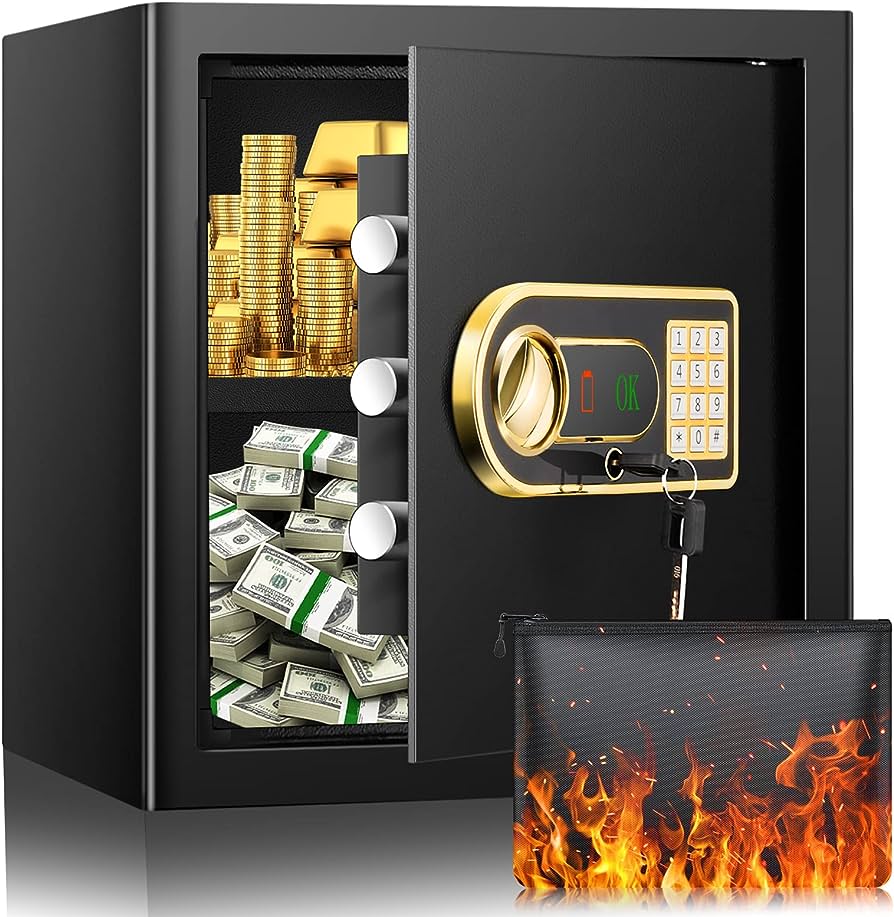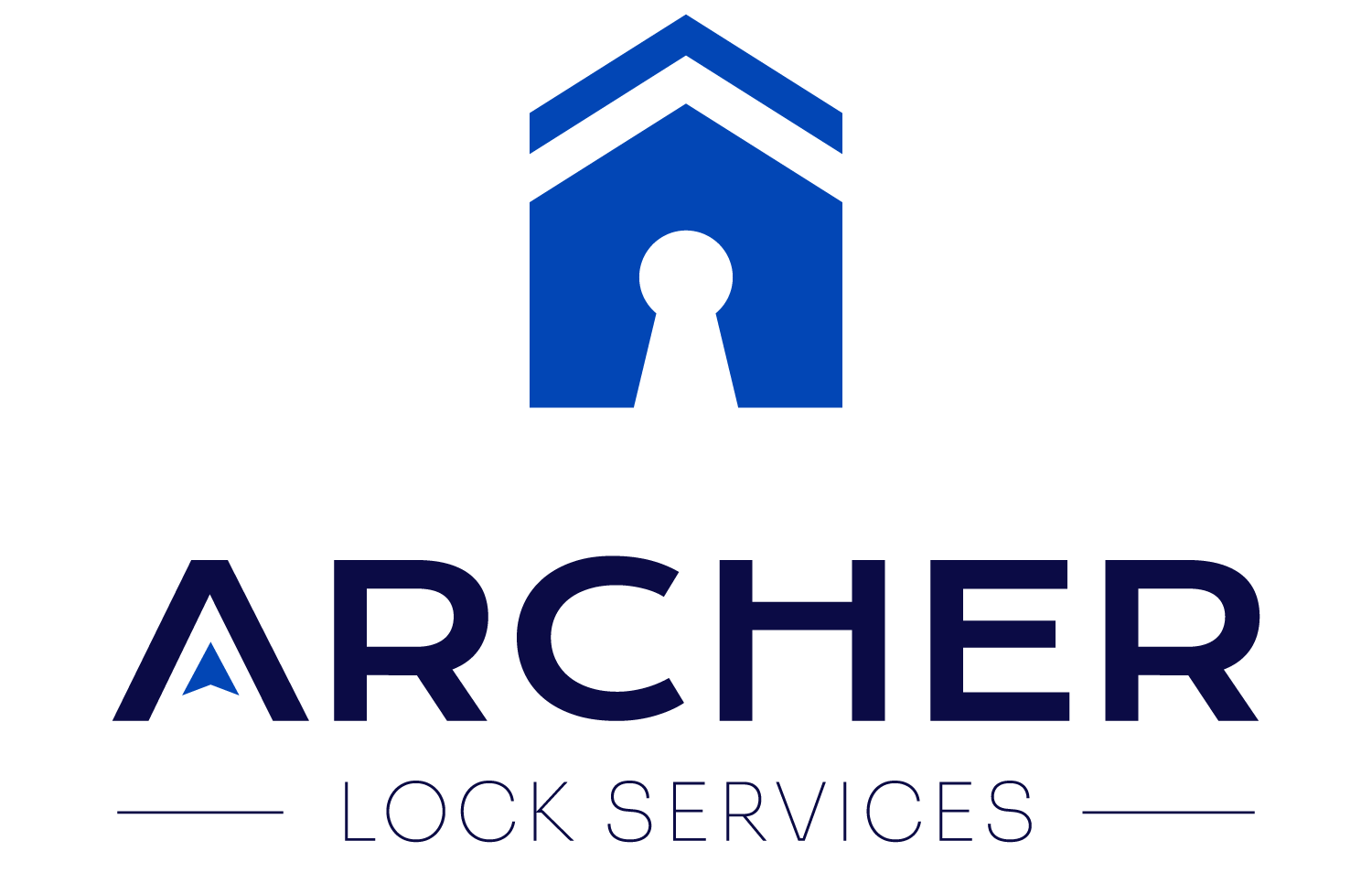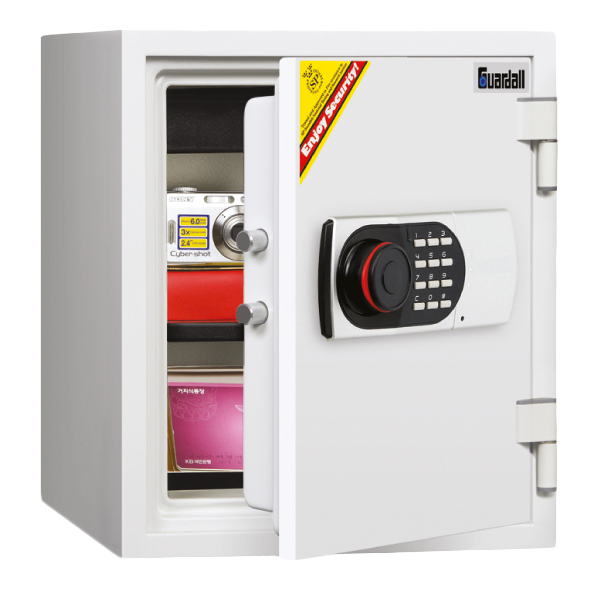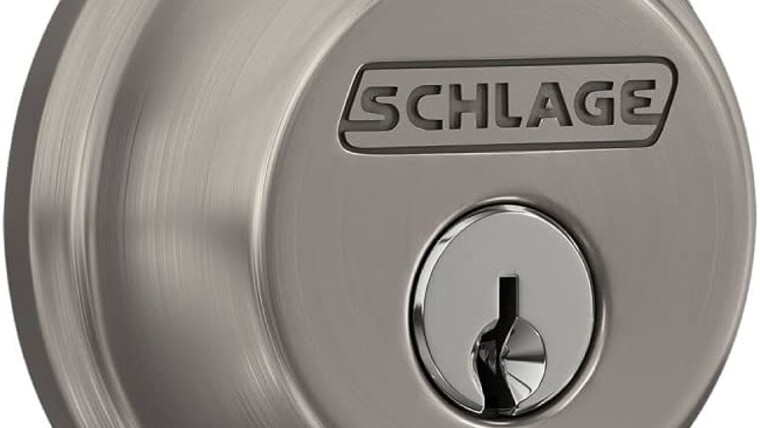5 Tips on Choosing the Right Safe
As a professional locksmith in Vancouver, I encounter a lot of safes in all shapes and sizes. Before the advent of Amazon and e-commerce, safes were kind of hard to find and buy. By definition, safe and security containers are bulky and heavy. So they are expensive to hold as inventory.
These days, you can order a lot of lower-grade safes off Amazon or just pick one up at Costco or any DIY store. However, I generally find my clients know less about safes than about lock hardware. So here are 5 tips on choosing the right safe for your home or business.
Tip #1: Consider your budget
This may sound like a no-brainer, but the safe or security container should maximize the value of your budget.
Too often, I get clients who focus on the wrong feature and overspend to obtain said feature. On the other hand, they will underestimate the importance of the feature they actually need and underspend in that area. This usually results in an expensive hunk of metal that doesn’t meet their needs. Unfortunately, clients usually only find out once the proverbial s**t hits the fan.
As a general rule of thumb, I recommend spending at least 50% of the value of the items you plan to keep inside the safe on the safe itself.
For example, if you plan to keep high-end jewelry, bundles of cash, and other items of high value in the safe, you should spend thousands of dollars on a TL-15 or TL-30 safe (aka a Jeweler’s Safe). These safes have concrete-filled walls and doors and provide some of the highest levels of protection in the industry. Plus your insurance company will probably demand you keep such items in a security container of appropriate level just for insurance purposes.
In another example, if you are looking for a place to store your passport, legal papers, and a small amount of valuables (under $1000), a Sentry Safe from Costco, Staples, or Home Depot will probably satisfy your needs.
However, I have plenty of clients who want to store items worth more than $1000 (i.e. diamond wedding rings, small collectibles, etc), but cannot afford to get a TL series safe. In that case, I recommend them to obtain a safe deposit bank at their local bank branch.
Bank Vaults offer a level of protection for most customers that is the best value. You can choose the size you require, it’s guarded by a giant thick vault door behind a metal cage, it is thermally and humidity controlled (most of the time), and there is always someone monitoring it in-person or via electronics at all times.
Depending on your banking package, you may be able to receive a discount on the monthly fee or get it free altogether.
Last time we had a safe deposit box at the Royal Bank of Canada, my wife and I were charged ~$50 per year for a small box. As of the time of this article, a Sentry Safe at Costco costs about $400 after taxes. So that works out to about 8 years of renting a safe deposit box sitting inside a well-protected bank vault. Versus, a Sentry Safe that I can break open in under 30 minutes.
Of course, you can fit more into a Sentry Safe, but you really don’t want to overstuff a Sentry Safe – bad things will happen. In addition, I don’t see a lot of Sentry Safes lasting more than 5 to 7 years. Somewhere along the line something goes wrong, and I have to bust them open. Pretty easy to do, so I don’t mind the business one bit.
Tip #2: Consider if the safe needs to be bolted down
Generally speaking, if the safe or security container is for a business or a commercial space, you will almost always bolt the safe down to the floor.

Similarly:
- If you have a gun safe, you should definitely bolt it down to the floor.
- If you keep valuables worth over $1000, you probably should bolt it down to the floor.
- If you are not keeping items worth over $1000, you probably don’t need to bolt it down. If you do, you should probably keep said items in a bank’s safe deposit box.
Bolting down a safe requires a hole be drilled into the floor (ideally concrete), then using a stem anchor or something similar, the safe is fixed to the floor with a nut and washer. This prevents someone from simply picking up the safe and moving it elsewhere for unauthorized entry.
Most safes that can be purchased on Amazon and DIY stores are not meant to be bolted down. You can tell because they don’t have the hole at the bottom of the safe floor nor the hardware to use the bolt-down hole.
If your safe needs to be affixed in place, make sure to select one that has the bolt down hole.
One of my professional peeves when it comes to safes are security containers that are bolted down onto pieces of furniture. I have seen many retail clients bolt down a safe into the cupboard underneath the cash registers etc. Unless the furniture is made of steel and bolted into the floor or very difficult to move, I suggest using the concrete floor. Otherwise, it won’t take much effort to pry the safe off the furniture.
If you bolt down a safe to a wood floor, it can be technically pried off the floor with a large pry bar. A ⅜” concrete sleeve anchor can withstand up to 1406 lbs of pull out force and up to 3082 lbs shear force. Larger safes using ¾” anchors can take up to 3783 lbs of pull out force and up to 7059 lbs of shear force.
Combined with the sheer weight of these safes, once it bolted down to concrete, it’s not going anywhere. However, on a wood floor, the weight of the safe can make it actually easier to rip the bolt out from the wood if the safe is tipped over. This can be easily done with a few tools that I will not discuss here.
Finally, a safe that can be bolted down will usually need to be purchased from a Commercial Locksmith or a Safe Technician. If you are looking for a safe, please call or text me at 604-363-2760 or email me at alex@locksmithvancouver.com.
While there are a few websites selling Commercial Grade Safes on-line, it is usually a good idea to consult with a Professional Locksmith before buying one – or read this article.
Tip #3: Fire Protection vs. Burglary Protection
In my professional opinion, the average homeowner is not hoarding large amounts of cash, precious metals, and other such valuables at home. In our mostly cashless society, most people I know don’t have any cash on hand.
As such, most residential clients should value Fire Protection over Burglary Protection. Largely because it is cheaper to buy a Fire Safe than a security container with a higher classification.
A good quality fire-resistant safe should provide at least 1 hour of fire protection while holding an internal temperature below 350 degrees Fahrenheit or 177 degrees Celsius. This temperature threshold is crucial because paper will start to char beyond this level.

If you plan to hold Data Media such as backup tapes, discs, microfilm, and microfiche, these will begin to be damaged when the temperature exceeds 125 degrees Fahrenheit or 52 degrees Celsius and humidity above 80%. In that case, I recommend you use a safe specifically designed to hold Data Media items. These Data Media Safes are usually rated for 2 hours of fire protection and have a wood internal cabinet for additional fire protection and to control humidity.
The average safe sold at Costco and Home Depot will provide at least 60 minutes of fire protection. If you live in an urban environment, that will probably be enough time for the Fire Department to extinguish a moderate fire. If you live in a rural area and the Fire Department takes an hour to get to you, you should probably consider a higher level of fire protection.
Some clients mistakenly believe that since their homes are made of concrete, they need less fire protection. They could not be more wrong. Just look at the concrete homes that burned down during the latest Wildfire Season leaving their homeowners with nothing. Protect your valuables and memories with a Fire Safe.
When it comes to Burglary Protection, there are several classes and categories with increasing levels of protection. As you go up the levels, the metal walls become thicker and the wall filling moves from a loose fire dampener to high-density concrete.
Discussing each level is beyond the scope of this article. Needless to say, most Canadians will probably just need the basic level of burglary protection at Class 2 or a “C” rated Burglary Safe. If you are a Commercial client and you need a safe for your business, perhaps you need to go to the next level. For example, most jewellers will have a Vault or a Jeweler’s Safe with a TL-15 or TL-30 rating on the premises.
Burglary Protection is usually priced as an additional feature on top of Fire Protection. So safes or security containers that provide both will be more expensive. It is not that fire-resistant safes do not provide any defence against vandalism or penetration attacks. They are just not designed to provide any to a recognized standard. This is why I can open pretty much any Sentry Safe in under an hour.
Tip #4: Consider the placement in your home or business
At this point, you probably have a decent idea of the kind of safe you need and can afford. Now you need to consider where you are going to place the safe in your home or business and how you are going to get it into the desired position.
Starting with the basics, some of the factors you should consider are:
- Visibility
- Accessibility
- Serviceability
Visibility
How visible is the safe to you or someone else? Do you want anyone to know where your safe is? Most of the time, the answer is probably no.
There is a reason why most of us keep safes and security containers in a storage room or someplace similar. Unless you run a showroom selling safes, it is kept hidden and out of sight.
If you want to go to the next level of hiding a safe’s visibility, you should consider a floor or a wall safe. Once installed properly, the entire safe can be concealed behind a painting or a false floor covering.
The downside of floor or wall safes is that they usually involve a construction crew to retrofit the safe into your wall or floor. You will also need to consider the composition of your wall or floor plus the thickness of the material versus the depth of your safe.
Most walls are not very thick which means the size of the wall safe will be limited. Plus most walls are made from just drywall and wood/steel studs so the wall safes are vulnerable to being just pried off. So make sure it’s well hidden behind a painting or picture frame.
As for floor safes, please make sure to install it onto a concrete floor. If you install it into a wood floor, the size will be very limited and vulnerable to prying attacks. As most customers tend to install this into their basement floors, you will also need to consider if you are living below the local water table or if you live in a flood plain. Floor safes are usually not waterproof and prone to flooding and water damage.
Accessibility
Like many things in our lives, if it is not easy to use or access, we tend not to use it. After spending all that money on the safe or security container, be sure to place it where you will actually use it.
If you don’t, you probably end up forgetting the combination or misplacing the key somewhere. Then it’s going to cost you hundreds of dollars for a Safe Technician to open the safe.
Many of my customers place the safe in some dark corner next to the wall. This causes 2 problems: 1) they then fill the room with stuff and make the safe inaccessible; 2) The safe is so close to a wall that the safe door cannot swing completely open.
Even a Sentry Safe has a door that is at least 2” thick. This means that the safe door needs to swing past 90 degrees wide for the inside space to be completely accessible. When choosing a placement for your safe, I recommend having nothing that impedes the safe door swinging open 180 degrees. That way, you can enjoy the full inside volume of your safe.
Serviceability
Servicing a safe or security container includes getting the safe into position. Most new safes are delivered to the curb or driveway of your premises. Unless other arrangements have been made, it is up to the home or business owner to get it into place.
If it is a small safe that weighs under 50 lbs, this probably won’t be a problem. However, if it weighs a few hundred pounds, how are you going to get it into place? If it weighs several thousand pounds, can your floors or stairs even take the weight?
Professionally, for safes weighing more than 200 lbs, I usually hire someone else to do it. I got a hand truck that can handle up to 600 lbs, but I don’t want to risk injuring myself trying to move a dead weight that is heavier than my own body weight. Last thing you want to do is drop a safe. Not only can you crush your finger or toes, you may also inadvertently trigger the glass relocker and cause a lockout on your brand new safe.
So if you order a safe online or have one delivered, make sure you have a plan in case it’s a curbside/driveway only delivery. Also, make sure that they guarantee the security container works upon delivery. As I previously mentioned, if the safe was jostled hard during transit, the glass relocker may have engaged.
Another serviceability factor to consider is how hard it will be for a Safe Tech to repair or open the safe. If the safe or security container has been placed in an awkward and hard-to-reach area, it will take longer and a Safe Tech’s hourly rate is not cheap.
Tip #5: Electronic or Mechanical
The last factor to consider is whether or not the safe utilizes a mechanical dial or an electronic keypad to open the safe.
Both types should be UL tested and rated, so it’s really a personal choice (look for the UL rating sticker). Some people prefer the time-tested reliability of a mechanical dial. All things being equal, I personally prefer the convenience of electronic keypads.
When it comes to a mechanical dial, I recommend you choose a safe with a Sargent and Greenleaf dial. They are distinguishable by the “S&G” logo on the face of the dial. A good quality mechanical safe would have a S&G dial. There are great mechanical dials from Mosler, Diebold, and so on, but I see S&G more often than any other brand in Vancouver.
As for electronic keypads, I personally prefer the La Gard Keypads. They are probably one of the most popular electronic safe keypads in the market which makes them hard to find sometimes. However, they are very reliable and easy for most of my clients to use and reprogram without me.
This brings us to the biggest disadvantage of mechanical dials. Resetting the combination on a mechanical dial should be done by a Professional Vancouver Locksmith or a Safe Technician. On the other hand, resetting the combo on an electronic keypad is super easy even for my clients.
If you want the resilience of a mechanical dial with the convenience and auditing feature of an electronic lock, you can opt for the Kaba-MAS X-10. These are approved by the US Government for GSA safes and security containers. I’ve seen pictures where they use these to secure high security doors and etc.
The X-10 is probably one of the best electromechanical locks for safes currently on the market. The entire thing is self powered so it does not use batteries and never dies. The downsides are:
- They are really really expensive just by itself
- Can be purchased usually only by US Citizens
- Can only be serviced by a Safe Tech is has received GSA certification and thus is a US Citizen
While the X-10 sounds awesome, unless you are living in the U.S.A. and know there is a GSA-certified Safe Tech working in your area, you should stick to the S&G and La Gard locks.
Final Thoughts
I hope these 5 Tips on Choosing the Right Safe provide you with some guidance. Just remember that you will get what you pay for in this industry.
Cheap safes are cheap for a reason. I would say the average price for a decently sized safe offering a good combination of fire and burglary protection costs about $2000 locally in Vancouver.
I have found the same product for sale online at a significant discount with a few caveats:
- Delivery is to the curb or driveway
- Setup is 100% up to the customer
- The “Warranty” is basically unenforceable
The last point is the biggest issue with ordering a safe online. If something goes wrong or if you get a lemon, you are kind of out of luck. Most of the time, they will ask you to ship it back at your cost. Can you imagine how much it will cost to ship a 300 lb safe across the country or internationally? This is why I always recommend buying your safe or security container from a reputable local Vancouver Locksmith, like myself.
If you get a lemon, we will get you a replacement from a local distributor. If something goes wrong, we have local Safe Technicians ready to service you.
For all your inquiries about safes, please feel free to call or text me at 604-363-2760 or email me at alex@locksmithvancouver.com. I’m always happy to have a chat!



